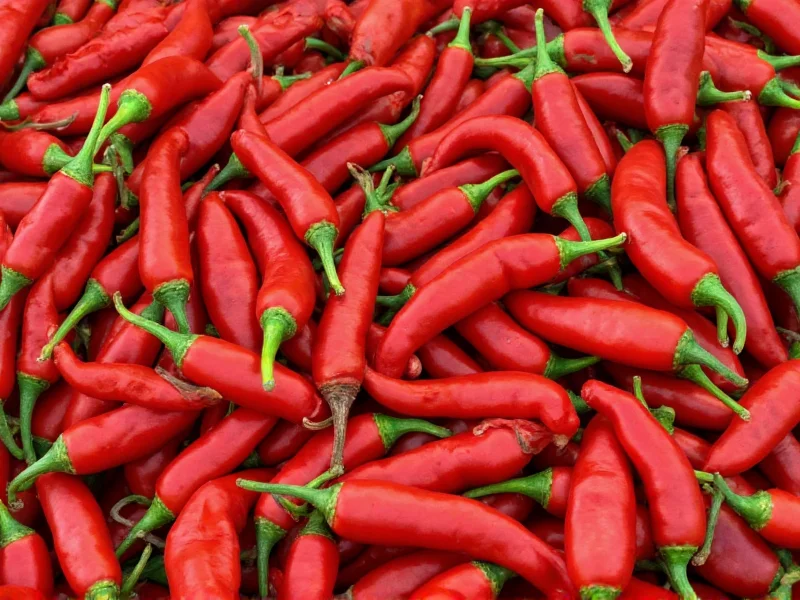The Scoville scale remains the definitive measurement system for chili pepper heat, providing consumers and chefs with crucial information about capsaicin concentration. Developed in 1912 by pharmacist Wilbur Scoville, this scale has evolved from subjective human testing to precise laboratory measurements while maintaining its fundamental purpose: quantifying the pungency of chili peppers and related products.
History and Evolution of the Scoville Measurement
Wilbur Scoville's original Organoleptic Test involved diluting chili extracts in sugar water until the heat became undetectable to a panel of tasters. The degree of dilution determined the Scoville Heat Units (SHU). A rating of 5,000 SHU meant the extract required dilution by 5,000 times before the heat disappeared. While groundbreaking for its time, this method suffered from significant subjectivity due to varying human sensitivity to capsaicin.
Modern laboratories now use High-Performance Liquid Chromatography (HPLC) to measure capsaicinoids precisely, then convert these measurements to Scoville units using a mathematical formula. This scientific approach provides consistent, objective results unaffected by human taste variation. Despite these technological advances, the Scoville scale remains the consumer-friendly reference point for understanding chili pepper heat levels.
Understanding Scoville Heat Units in Practice
The scale operates logarithmically, meaning each increment represents an exponential increase in heat. A 10,000 SHU pepper isn't twice as hot as a 5,000 SHU pepper—it's significantly more intense. This non-linear progression explains why moving up the scale dramatically changes the eating experience.
Pepper heat varies within the same variety due to growing conditions, soil composition, climate, and even position on the plant. A jalapeño might range from 2,500-8,000 SHU depending on these factors. This natural variation means Scoville ratings represent ranges rather than fixed values.
| Chili Pepper Variety | Scoville Heat Units (SHU) | Heat Level Description |
|---|---|---|
| Bell Pepper | 0 | No heat |
| Pepperoncini | 100-500 | Mild, barely noticeable |
| Jalapeño | 2,500-8,000 | Moderate, distinct heat |
| Serrano | 10,000-23,000 | Hot, sharp bite |
| Habanero | 100,000-350,000 | Very hot, fruity flavor |
| Ghost Pepper (Bhut Jolokia) | 800,000-1,041,427 | Extremely hot, intense burn |
| Carolina Reaper | 1,400,000-2,200,000 | World's hottest, searing pain |
Practical Applications for Cooks and Consumers
Understanding scoville heat units explained helps home cooks select appropriate peppers for recipes. Mild peppers like poblanos (1,000-2,000 SHU) work well in dishes where flavor matters more than heat, while habaneros provide tropical fruit notes alongside significant burn. When substituting peppers, consider both heat level and flavor profile—scotch bonnets offer similar heat to habaneros but with distinct citrus notes.
For comparing scoville ratings of common peppers, remember that processed products like hot sauces often combine multiple peppers and may include capsaicin extracts, resulting in higher heat levels than single-variety peppers. A habanero-based sauce might reach 300,000 SHU while pure habanero peppers max out around 350,000 SHU.
Safety Considerations with High-Scoville Peppers
Handling extremely hot peppers requires precautions. Capsaicin oils can cause severe skin irritation and eye damage. Always wear gloves when preparing high-scoville peppers like ghost peppers or reapers, and avoid touching your face. If exposed, use dairy products (milk, yogurt) rather than water to neutralize the burning sensation, as capsaicin is fat-soluble.
Consuming extremely hot peppers carries risks including stomach pain, nausea, and in rare cases, more serious reactions. The body's response to intense capsaicin includes increased heart rate and sweating—natural reactions that typically subside within 30-45 minutes. Those with gastrointestinal conditions should exercise particular caution with high-scoville peppers.
Modern Measurement Techniques Beyond Scoville
While the Scoville scale remains popular for consumer understanding, food scientists increasingly rely on ASTA pungency units, which measure capsaicinoid concentration directly. One ASTA unit equals approximately 15 Scoville units. This more precise measurement helps food manufacturers maintain consistent heat levels in commercial products.
Researchers continue exploring the health benefits of capsaicin, including pain relief properties and potential metabolic benefits. Understanding chili pepper heat levels helps medical researchers determine appropriate dosages for therapeutic applications while avoiding adverse reactions.
Conclusion: Navigating the World of Chili Heat
The Scoville scale provides an essential framework for understanding pepper heat, from mild culinary enhancers to extreme challenge peppers. By recognizing how scoville scale works and respecting the power of high-Scoville peppers, consumers can safely explore the diverse world of chili flavors. Whether you're a home cook experimenting with new recipes or a heat enthusiast seeking the next challenge, understanding these measurements helps make informed choices about pepper selection and usage.











 浙公网安备
33010002000092号
浙公网安备
33010002000092号 浙B2-20120091-4
浙B2-20120091-4